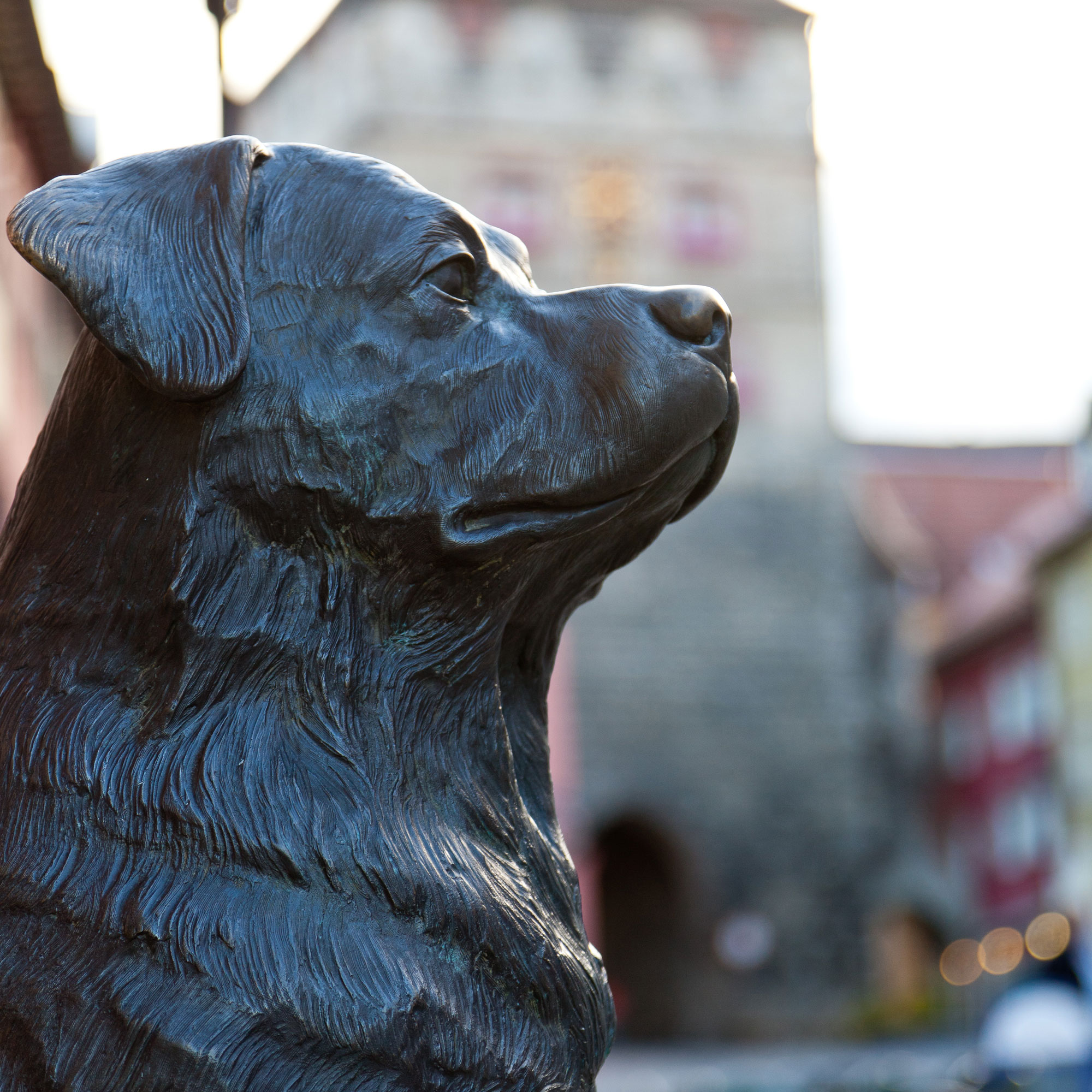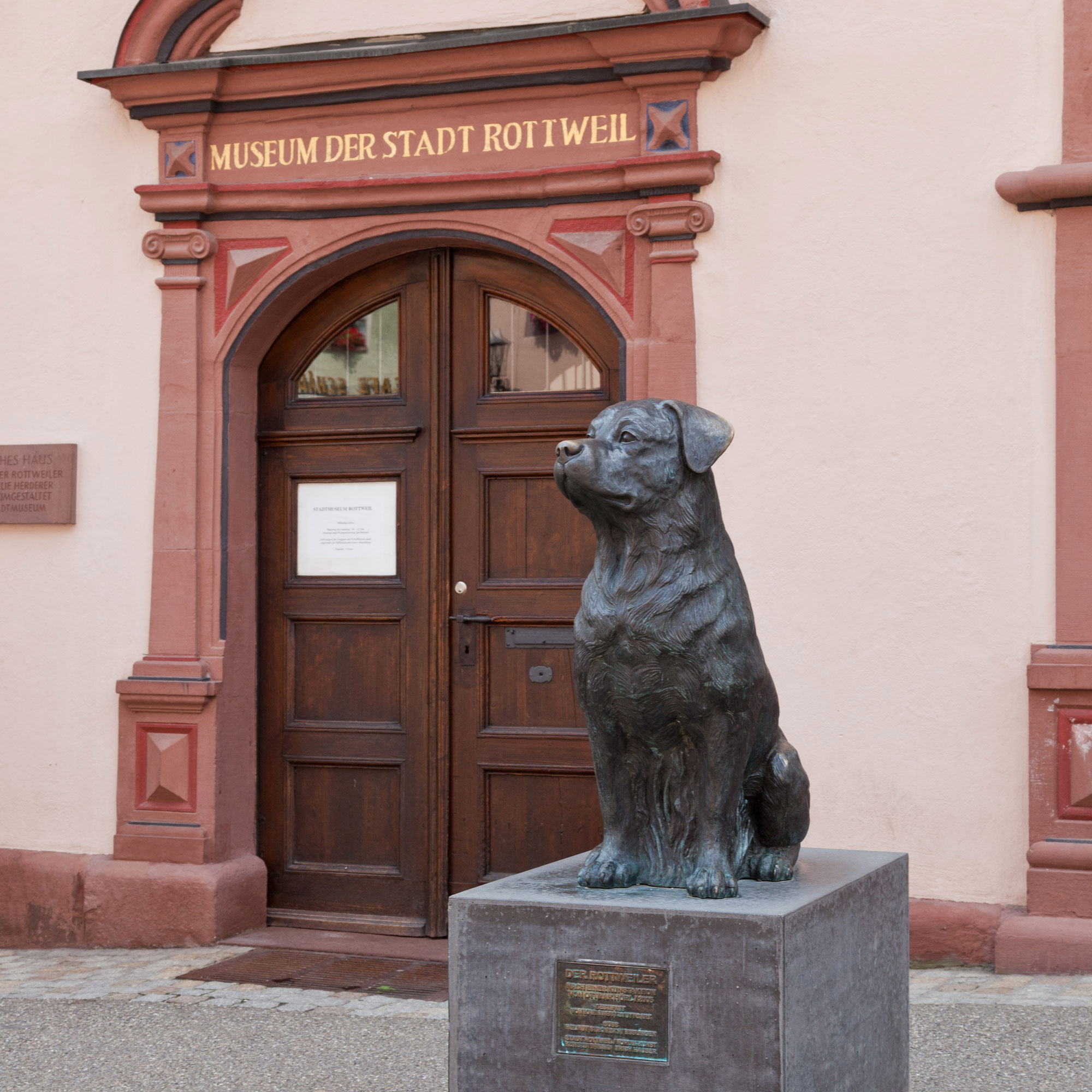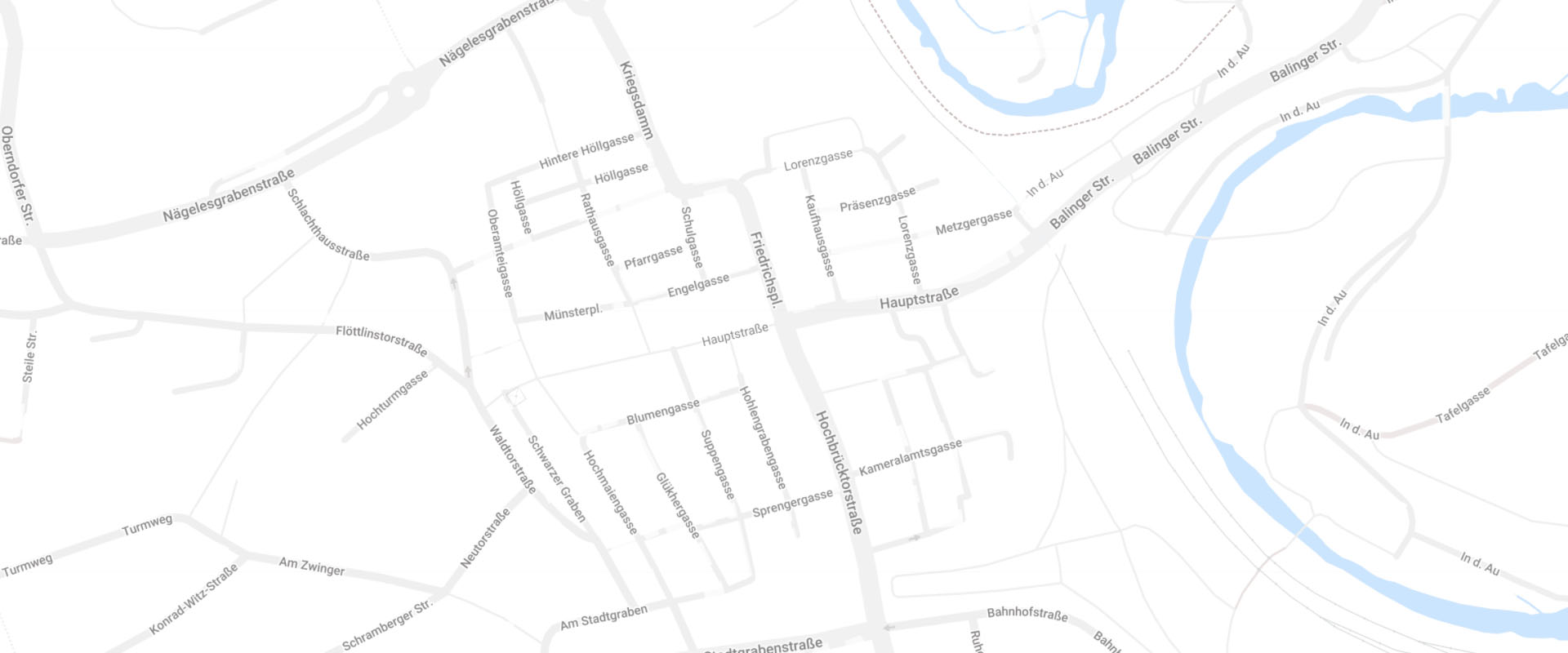Butchers and cattle traders have long appreciated the Rottweiler dog for its qualities. Until the 19th century, Rottweil was an important trading centre for cattle. Cows and sheep were primarily driven to the Breisgau, the Alsace and the Neckar valley. In times when there were still robbers, wolves and vast areas that were hardly populated, such herd drivings required strong, tenacious, calm and smart dogs. A proper butcher from Rottweil usually had a number of dogs because the livestock trade was mainly in their own hands. Until the early 20th century, butchers travelled on foot, day and night, in wind and weather. They had to visit villages and remote farms to buy cattle to be slaughtered in the following week. That meant that they carried a lot of money on them to pay for the cows. And the robbers knew that. Again and again, butchers were ambushed and robbed. When they took Rottweiler dogs along, though, they stood a better chance of returning home safely.
The Rottweiler is an excellent cattle dog, whose task was to drive even cattle that were unwilling to move. Besides this, it was possible to harness the dog and hitch it to the heavy butcher carts or sleds. In this way, they assisted the journeymen and apprentices.
High appreciation of this dog has a long tradition in Rottweil. As early as in 1468, two citizens from Rottweil even brought a dog theft before archduchess Mechthild in Rottenburg. And in 1669, when councillor Hans Jakob Pfister did not treat his dog properly, he was forced to resign.
The designation for this dog first emerges at cattle markets held outside the town, when it became obvious that a particular type of dog came mainly from Rottweil – and that’s how the Rottweiler got its name.
It is only since the 19th century that people began to view the Rottweiler as belonging to a breed of dogs, in the narrower sense of the word. In 1907, the “General German Rottweiler Club” was established.
From then on, the Rottweiler breed was systematically documented. That meant that a dog had to meet fixed criteria in order to be considered and recorded as a “real” or authentic Rottweiler. The aim of breeding Rottweilers is to rear a well-balanced, sturdy and strongly-built working companion and family dog with the utmost physical capabilities and distinctive temperament.
Konrad Adenauer, the first chancellor of the Federal Republic of Germany, was all praise for his Rottweiler when he said: “My Rottweiler is my faithful guardian and a pleasant companion”.










